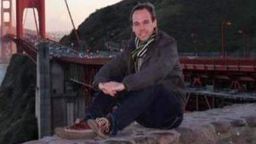Story highlights
Germanwings Flight 9525 had a slight delay before taking off from Barcelona, Spain
After leveling off at 38,000 feet, the plane descended steadily before hitting the Alps
Screams were heard in plane's cabin in minutes before crash, according to audio recording
There were screams.
Then the sounds of a commercial jetliner slamming into the mountainside.
And finally silence. Deathly silence.
That much is known about the final few minutes for the 144 passengers on Germanwings Flight 9525. Beyond that, it’s a matter of imagination and speculation – about what they saw and what they felt as their plane approached and then crashed into the Alps.
None of them can speak for themselves, nor can any of the flight’s six crew members. But authorities have given some clues, based on what investigators know about the aircraft’s trajectory and what they’ve heard on a mangled cockpit voice recorder recovered at the crash site.
It all began on what seemed like most any other Tuesday as citizens of 18 countries packed into the Germanwings plane in Barcelona, Spain.
The passengers came from all walks of life, using Lufthansa’s low-cost carrier to get to Dusseldorf, Germany. They were high school students, heading home after a week in Spain. They were parents and children enjoying their vacation. There were businessmen, scouting out store locations.
There was a 26-minute delay before takeoff because air traffic controllers didn’t give the OK to start the plane’s engines earlier and there was a small wait in the takeoff rotation, according to Lufthansa. For any frequent flier, that kind of delay is nothing abnormal.
Nor, it seems, was takeoff. The Airbus A320 left and headed northeast at 10:01 a.m. (5:01 a.m. ET) on what should have been a 726-mile journey.
The plane leveled off at 38,000 feet, its cruising altitude. By this point, passengers would be OK to unbuckle, head to the restroom or get their bags out of the overhead bin.
A seemingly innocuous act changed everything: The aircraft’s pilot had to use the restroom, according to Lufthansa CEO Carsten Spohr, telling the co-pilot that he was stepping out.
It’s possible that passengers saw the captain in the cabin, going to or from the restroom. They also could have noticed that the aircraft was going down – even though they were about a half-hour into a nearly two-hour flight, with the Alps ahead of them.
The passengers couldn’t have known it, but the co-pilot – identified as 28-year-old Andreas Lubitz –“manipulated the buttons of the flight monitoring system to activate the descent of the aircraft” while the pilot was out, Marseille prosecutor Brice Robin said Thursday.

This was around 10:45 a.m.
It wasn’t like the plane suddenly jerked down, plunging straight into the ground. Authorities described a steady descent at a rate of about 3,000 to 3,500 feet (or roughly 1,000 meters) per minute.
Still, it is the kind of descent you’d expect while nearing an airport – not traversing the Alps.
If passengers didn’t notice that fall, they might have caught wind of what was happening at the front of the plane.
Students, singers among the victims
Inside the cockpit, the only sound was that of Lubitz breathing steadily.
But outside the cockpit, the noises apparently grew louder and more frantic. The pilot tried to open the door but couldn’t get in. He likely knocked on the door. He used a video conference system to talk to the co-pilot, Robin said.
None of it worked.
Nor did his last-ditch attempt, as recounted by a senior French military official involved in the crash investigation to The New York Times.
“You can hear he is trying to smash the door down,” the official said.
Did the passengers hear this commotion upfront? It’s hard to imagine they didn’t. And if that wasn’t reason enough to cause worry, they just had to look outside – at the mountain chain that should have been far below them instead of getting closer and closer and closer.
The voice recorder didn’t indicate any abnormal noise in the cabin until the final few moments. Still, even if the passengers didn’t know it at the time, all it took was eight minutes for a seemingly normal flight to become a nightmare.
The nightmare ended in a violent crash into rugged, remote terrain. So did the screams and the lives of all 150 people on Flight 9525 – a death that Robin described as “instantaneous.”
Who was co-pilot Andreas Lubitz?



































